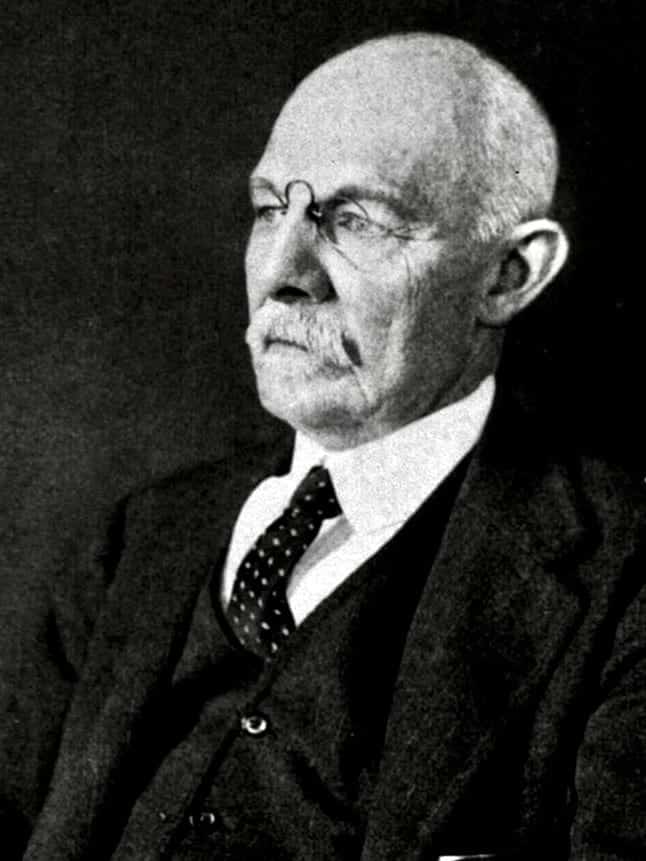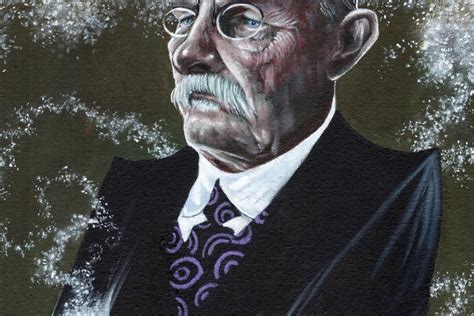William Halsted

William Halsted, a pioneering surgeon and medical innovator, left an indelible mark on the field of medicine. His contributions to surgical techniques, anesthesia, and the overall practice of medicine have had a profound impact, shaping the way surgery is performed today. This article delves into the life and legacy of William Halsted, exploring his remarkable achievements, innovative methodologies, and the lasting influence he exerted on the medical world.
The Life and Early Influences of William Halsted

Born in New York City on September 23, 1852, William Stewart Halsted grew up in a prosperous and well-connected family. His father, James P. Halsted, was a successful businessman and banker, providing the family with financial stability and social standing. William's early years were spent in an affluent environment, receiving a private education and being exposed to the cultural and intellectual richness of the city.
Halsted's early interests were diverse, ranging from botany to chemistry. He attended Phillips Academy in Andover, Massachusetts, where he excelled academically and developed a strong foundation in the sciences. His curiosity and passion for discovery were evident from a young age, setting the stage for his future career in medicine.
In 1874, Halsted enrolled at the College of Physicians and Surgeons at Columbia University, one of the most prestigious medical schools in the country. Here, he was exposed to a rigorous curriculum that combined scientific theory with practical medical training. Halsted's exceptional intellect and dedication to his studies soon became apparent, earning him the respect of his peers and professors.
During his time at Columbia, Halsted was particularly drawn to the emerging field of surgery. The pioneering work of surgeons like Joseph Lister, who introduced antiseptic techniques, captivated Halsted's imagination. He recognized the potential for surgery to revolutionize medical practice and improve patient outcomes.
Halsted's Revolutionary Contributions to Surgery

After graduating from Columbia in 1877, Halsted embarked on a medical career that would redefine surgical practices. He began his surgical training at Bellevue Hospital in New York, working under the guidance of some of the most renowned surgeons of the time.
One of Halsted's most significant contributions was his pioneering work in the field of anesthesia. In the late 19th century, anesthesia was still a relatively new concept, and many surgeries were performed without adequate pain relief. Halsted recognized the need for safer and more effective anesthesia techniques.
In collaboration with his colleague Richard J. Hall, Halsted developed the "Halsted-Hall" anesthesia technique. This method involved the administration of a combination of morphine and atropine, which provided effective pain relief and reduced the risks associated with anesthesia. The Halsted-Hall technique quickly gained popularity and became a cornerstone of surgical practice, ensuring that patients could undergo surgeries with minimal discomfort.
Halsted's expertise extended beyond anesthesia. He was a master of surgical technique, known for his meticulous approach and precision. He introduced new surgical instruments and techniques, such as the use of surgical gloves, which significantly reduced the risk of infection during surgery. Halsted's emphasis on sterility and infection control revolutionized surgical practices, leading to improved patient outcomes and a reduction in post-operative complications.
The Halstedian Approach to Surgical Training
In addition to his innovative surgical techniques, Halsted made significant contributions to surgical education and training. He believed in a hands-on, apprenticeship-style approach to teaching surgery, emphasizing the importance of practical experience and mentorship.
At Johns Hopkins Hospital, where he served as the first chief of surgery, Halsted established a rigorous surgical residency program. This program, known as the "Halstedian Method," became the gold standard for surgical training. It involved a structured, multi-year curriculum that combined didactic instruction with extensive hands-on surgical experience.
| Key Components of the Halstedian Method |
|---|
| Comprehensive Surgical Curriculum |
| Apprenticeship-style Learning |
| Emphasis on Practical Experience |
| Mentorship and Close Supervision |
| Focus on Precision and Technique |

Under Halsted's guidance, residents learned not only the technical aspects of surgery but also the importance of critical thinking, problem-solving, and patient care. The Halstedian Method produced some of the most skilled and renowned surgeons of the time, many of whom went on to make significant contributions to the field themselves.
Halsted's Legacy and Impact on Modern Surgery
The influence of William Halsted extends far beyond his lifetime. His contributions to anesthesia, surgical technique, and education have had a lasting impact on the practice of surgery.
Halsted's anesthesia technique, while refined and improved over time, remains a fundamental aspect of surgical practice. His emphasis on patient comfort and safety during surgery continues to guide modern anesthesia practices.
Similarly, Halsted's surgical innovations, such as the use of surgical gloves and sterile techniques, have become standard protocols in operating rooms worldwide. His commitment to reducing infection rates and improving patient outcomes has saved countless lives and set a high standard for surgical care.
Furthermore, the Halstedian Method of surgical training has shaped the way surgeons are educated and trained today. The apprenticeship-style approach, combined with a rigorous curriculum, continues to be the foundation of surgical residency programs around the world. Halsted's legacy in surgical education ensures that future generations of surgeons are equipped with the skills and knowledge necessary to provide the highest level of patient care.
Frequently Asked Questions

What is William Halsted’s most significant contribution to medicine?
+William Halsted’s most significant contribution to medicine is arguably his work in anesthesia. His development of the Halsted-Hall anesthesia technique revolutionized surgical practice, ensuring patient comfort and safety during surgeries.
How did Halsted’s surgical techniques improve patient outcomes?
+Halsted’s surgical techniques focused on precision and sterility. By introducing surgical gloves and emphasizing infection control, he reduced post-operative complications and improved patient survival rates.
What is the Halstedian Method of surgical training?
+The Halstedian Method is an apprenticeship-style surgical training program developed by William Halsted. It combines didactic instruction with extensive hands-on experience, producing highly skilled surgeons.



